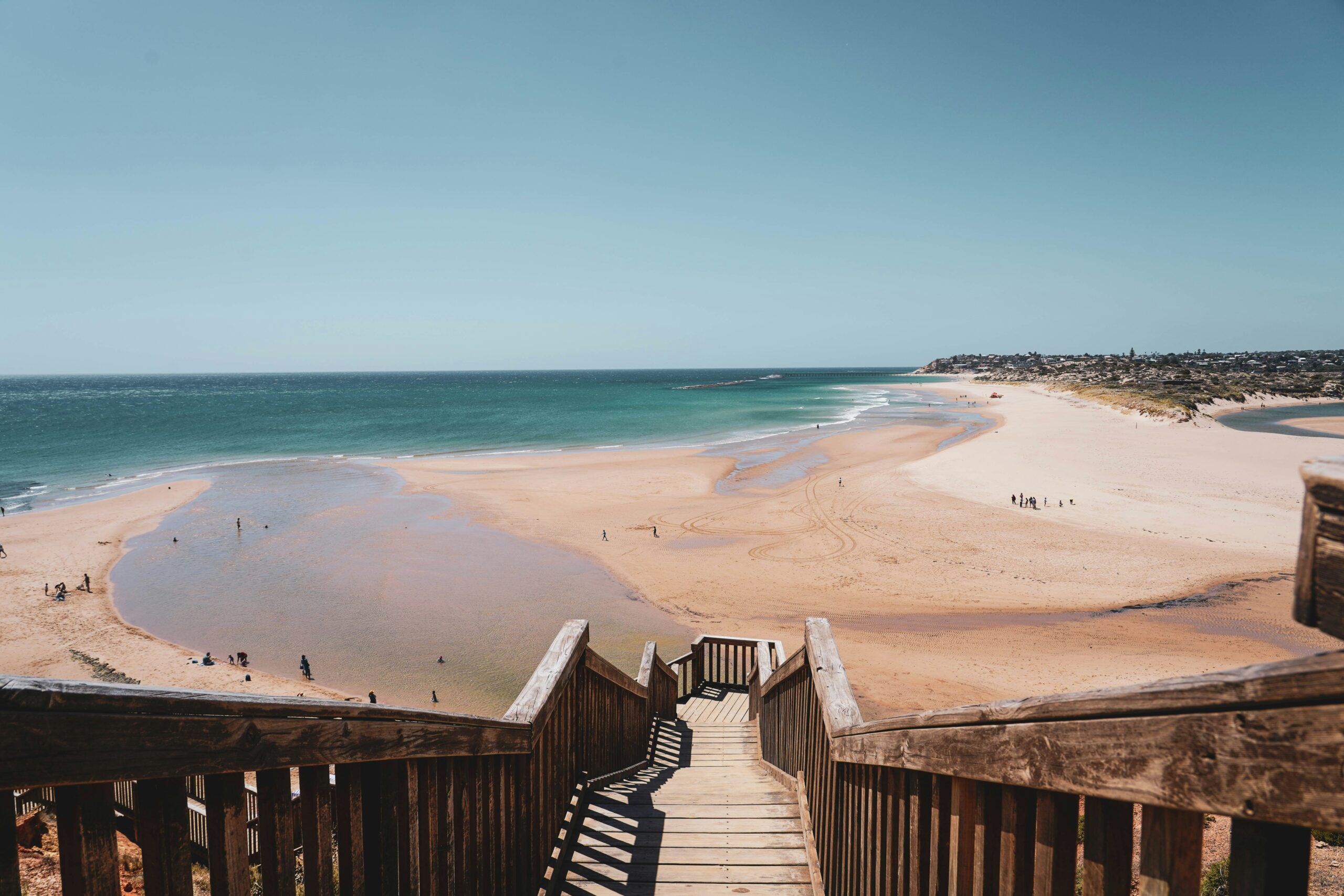Photo of beach in Adelaide, Australia
South Australia’s coastline is grappling with an unprecedented environmental disaster as a toxic algal bloom, exacerbated by marine heatwaves, continues to decimate marine life and disrupt local fisheries.
A bloom of unprecedented scale
Since March, the harmful algal bloom (HAB), primarily composed of Karenia mikimotoi, has spread across more than 4,500 square kilometers, affecting regions including Adelaide’s southern beaches, Yorke Peninsula, Kangaroo Island, and the Fleurieu Peninsula. The bloom has led to the deaths of over 200 marine species, including sharks, octopuses, and leafy sea dragons – with many taking to social media to express their concern. The algae release toxins that suffocate marine animals by damaging their gills, leading to widespread mortality.
Coorong Lagoon: a fragile ecosystem at risk
The bloom has recently infiltrated the Coorong’s North Lagoon, a Ramsar-listed wetland known for its ecological significance. Storms and high tides are believed to have transported the algae into this sensitive area, resulting in the deaths of thousands of polychaete worms, crabs, and small fish. Local fisher, Gary Hera-Singh, said the water was “as thick as pea soup,” with a pungent odour and discoloured appearance. The bloom’s presence in the Coorong raises concerns about long-term damage to the fragile environment and its food chain.
Marine heatwaves fuelling the crisis
The severity of the algal bloom is linked to a massive marine heatwave that, in 2024, engulfed nearly 40 million square kilometers of ocean—an area five times the size of Australia. This extreme heat, largely driven by climate change, has led to record-breaking sea surface temperatures, exacerbating the proliferation of harmful algae. The World Meteorological Organisation warns that such heat stress has lasting impacts on marine ecosystems, including mass coral bleaching and disruptions to coastal economies.
Public health and economic impacts
The algal bloom poses risks beyond marine life. Residents along the coast have reported respiratory irritation, skin rashes, and other health issues due to exposure to algal toxins. Commercial fisheries are facing closures, with pipi (cockles) harvesting halted in affected areas to prevent the packaging of dead or dying shellfish.
A call for coordinated action
Authorities are exploring mitigation strategies, including flushing affected areas with freshwater from the Murray River, though challenges remain. Experts emphasise the need for coordinated efforts to address the root causes of such environmental crises, particularly the role of climate change in intensifying marine heatwaves and algal blooms.
